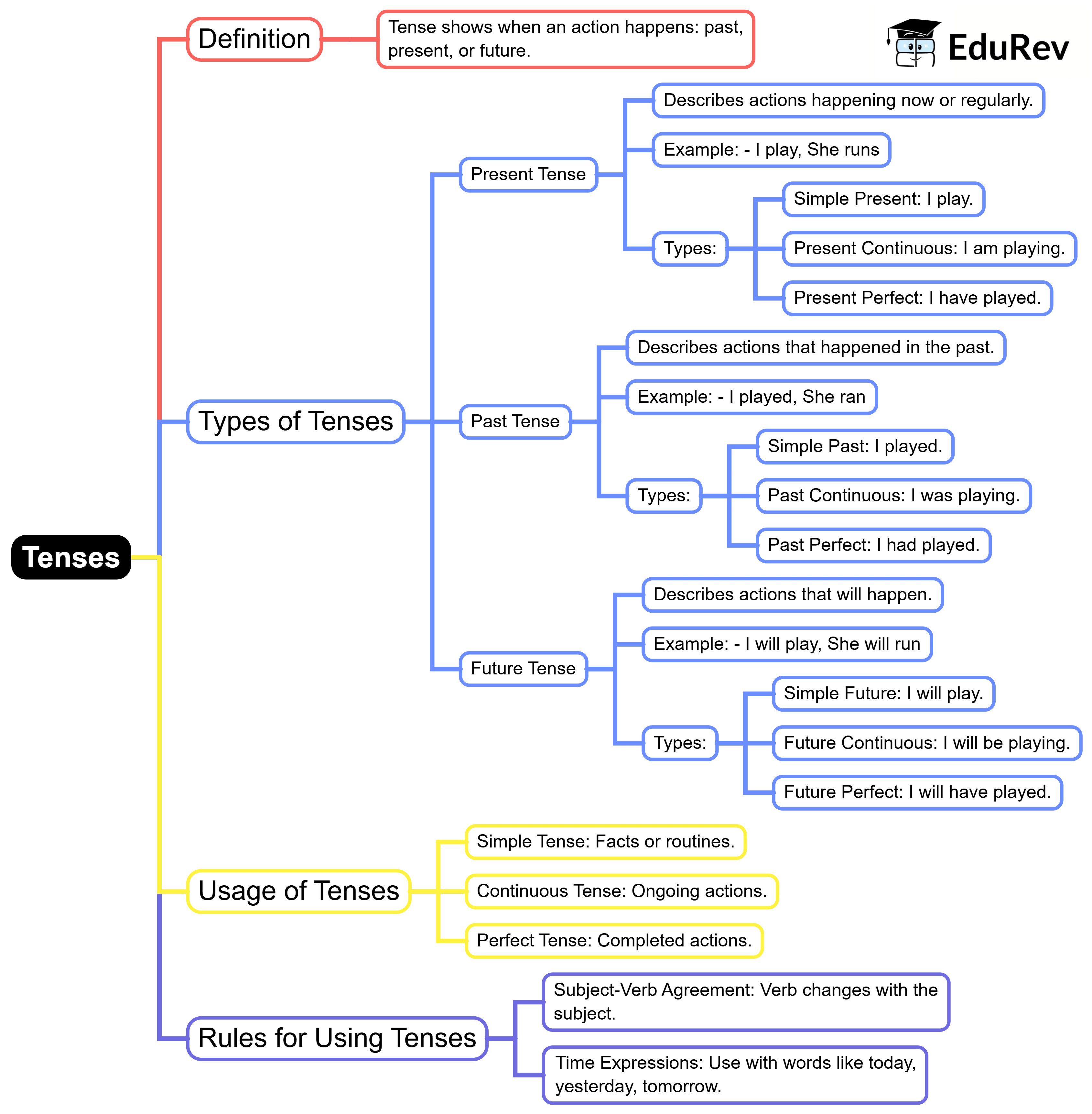Class 10 Exam > Class 10 Notes > English Grammar Advanced > Mind Map: Tenses
Mind Map: Tenses | English Grammar Advanced - Class 10 PDF Download

The document Mind Map: Tenses | English Grammar Advanced - Class 10 is a part of the Class 10 Course English Grammar Advanced.
All you need of Class 10 at this link: Class 10
|
54 videos|255 docs|40 tests
|
FAQs on Mind Map: Tenses - English Grammar Advanced - Class 10
| 1. What are the different types of tenses in English grammar? |  |
Ans. In English grammar, there are three main types of tenses: present, past, and future. Each of these can be further divided into four aspects: simple, continuous (progressive), perfect, and perfect continuous. This results in a total of twelve tenses:
1. Present Simple
2. Present Continuous
3. Present Perfect
4. Present Perfect Continuous
5. Past Simple
6. Past Continuous
7. Past Perfect
8. Past Perfect Continuous
9. Future Simple
10. Future Continuous
11. Future Perfect
12. Future Perfect Continuous.
| 2. How do I identify the tense of a verb in a sentence? |  |
Ans. To identify the tense of a verb in a sentence, look for the verb form and any auxiliary (helping) verbs that accompany it. The base form of the verb indicates the present tense, while the past form indicates the past tense. Auxiliary verbs like "is," "was," or "will be" can also help determine the tense. For example, in the sentence "She is reading," the verb "is" indicates present continuous tense, whereas in "She read," the verb "read" is in the past simple tense.
| 3. Why is it important to use correct tenses in writing? |  |
Ans. Using correct tenses in writing is crucial because it helps convey the timeline of actions clearly. Accurate tense usage allows readers to understand when events occur, which enhances comprehension and coherence. Misusing tenses can lead to confusion, misinterpretation of events, and a lack of clarity in communication.
| 4. Can you explain the difference between the present perfect and the past simple tense? |  |
Ans. The present perfect tense is used to describe actions that occurred at an unspecified time in the past and have relevance to the present, often formed with "has" or "have" plus the past participle (e.g., "I have eaten"). In contrast, the past simple tense describes actions that happened at a specific time in the past and are completed, typically formed by the past form of the verb (e.g., "I ate"). The key difference lies in the connection to the present and the specificity of the time reference.
| 5. How do I form the future perfect tense? |  |
Ans. The future perfect tense is formed using "will have" followed by the past participle of the main verb. For example, in the sentence "By next year, I will have graduated," "will have" indicates the future tense, and "graduated" is the past participle of "graduate." This tense is used to describe actions that will be completed before a certain point in the future.
Related Searches
















